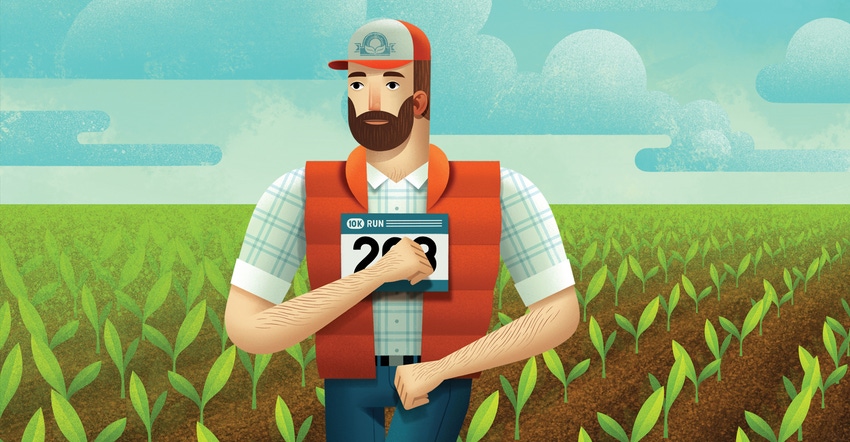
In part one and part two of this series we talked to large-scale operators who focused on hard work, controlling variables and building a good team to make their business work. But how, exactly, should a farm grow? You might as well ask how long is a piece of string, says Clint Reiss, who runs a 16,500-acre operation in Kansas with his parents and younger brother.
Reiss considers growth a balancing act, and he’s not afraid to walk away from ground that isn’t proving profitable after a year or two. Each year, the farm picks up several quarters and may drop less profitable ones.
Southwest Family Farms was a fraction of its current size two decades ago, at just 1,500 acres in 1996. At that time, Reiss was fresh out of college and foresaw a better future in full-time farming rather than splitting time as owners of a single John Deere dealership.
The Reisses closed the dealership and started watching and waiting for opportunities to grow. That growth never came evenly, but opportunities did arise.
“It came organically for us,” Reiss says. “It just so happened that a lot of people retired when we were looking to grow. You need the patience and willingness to take the chances when they do come, although you never want to bite off more than you can chew.”
And even though the family walked away from the machinery dealership, it gave them the connections they needed to accelerate that growth.
Reputation is key
Reiss says working on the farm’s reputation was another critical component of success. He was able to brand the farm in several ways, from building a website and being an open communicator to simply keeping ditches mowed, fields clean and the farmstead free of unnecessary clutter.
“You never know when someone may be looking,” he says, “and you may only get one shot to impress.”
In fact, that’s how Reiss won over some of his rented acres. Absentee landlords might visit the area once a year. They would drive by Southwest Family Farms and see that it was well taken care of; then visit the farm’s website and learn more about what they were doing.
“Once they do that, they can see that we’re a family operation, but we’re also professionals who are very involved,” he says.
Reiss has also used precision-ag practices to not only boost his own yields, but also strengthen his landowner relationships. For example, he might show them how a fertilizer prescription boosts yields without adding any input costs. And because not everyone in the area practices those variable-rate technologies, it becomes a competitive advantage for him.
The Reiss family also stays involved in church, school and co-op boards to be good neighbors and better connected to their community.
“This last year, we partnered with several neighbors to put in a new natural gas line that would benefit all of us,” he says. “And if we give up land, we try to recommend a good farmer that might be a better fit for it than it was for us.”
Big strides
Based on the most recent Farm Futures surveys, Bryce Knorr, senior grain market analyst, says four things became apparent when looking at the largest farms:
1. They’re more financially vulnerable. “To farm big, you need to handle more debt. And if your income doesn’t hold up, you’re in trouble,” Knorr says.
2. They adapt when needed. Large-acre farms don’t just stick with what they’re doing, especially if it isn’t working, Knorr says.
3. They aggressively shift machinery strategies to lower costs. Examples include buying used equipment or bigger equipment to cover more acres, he says. “They’re also still expanding as other farms cut acreage.”
4. They don’t go it alone. Successful big farms are less likely to farm alone, or only share equipment or labor among family, Knorr says. Successful large farms are more likely to form corporations, partnerships or limited liability companies with others, whether it’s in or out of the family, he says.
Finish line
Maybe there are no real secrets to farming 10,000 acres, just as there are no real secrets to long-distance running. Mostly, it’s about putting one foot in front of the other, over and over and over. It’s also about setting a good pace, knowing when to push it, and knowing when to slow down.
A true “finish line” doesn’t really exist, either. More miles are always out there, waiting.
About the Author(s)
You May Also Like






